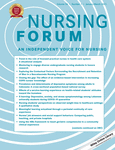Just culture in healthcare: An integrative review
Abstract
Background
In spite of two decades of the patient safety movement in the United States, healthcare safety remains a significant problem. The paucity of empirical literature related to Just Culture in healthcare indicates a need for this concept to be examined and operationalized.
Purpose
The purpose was to appraise the literature regarding the use and application of Just Culture in healthcare.
Methods
Using Whittemore and Knafl's framework for integrative reviews, a review of the literature was conducted using Cumulative Index to Nursing and Allied Health Literature, PubMed, PsychInfo, and Cochrane Review to identify peer-reviewed literature published between 2010 and 2020. The following search terms were used: “Just Culture” AND “healthcare system” OR “health care” OR “healthcare.”
Results
After screening for inclusion and exclusion criteria, a set of 10 articles were included in the review. Four main themes were identified: Error Management, Balance, Leadership and Staff, and Systems Leadership for Change.
Conclusion
There is a paucity of empirical research and quality improvement projects focusing on Just Culture. The themes identified in this integrative review provide the direction and focus for additional research and quality improvement efforts that will promote the adoption of Just Culture and improvement in patient safety.
CONFLICT OF INTERESTS
The authors declare that there are no conflict of interests.




